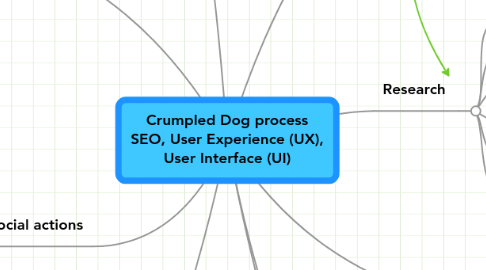
1. Review and adjust
1.1. Content
1.2. URL content and structure
1.3. UX and UI
1.4. Keywords
1.5. Link profile
1.6. Social
2. Goals
2.1. Organic
2.1.1. Ranking
2.1.2. Visitors
2.1.3. ROI
2.2. Adwords
2.2.1. Impressions
2.2.2. Visitors
2.2.3. CPC
2.2.4. ROI
3. Social actions
3.1. Blogs
3.1.1. Company blog
3.1.2. Guest blogging
3.2. Google +
3.2.1. Profile
3.2.2. Articles
3.2.3. Circles
3.3. Twitter
3.3.1. Industry
3.3.2. Company
3.3.3. Personal
3.3.4. Direct
3.4. Facebook
3.5. LinkedIn
3.6. YouTube
3.6.1. Channel
3.6.2. Website videos
3.6.3. Likes
3.7. Pinterest
3.8. Social buttons
3.8.1. Like
3.8.2. Follow
3.8.3. Visit
4. User behaviour
4.1. Pages
4.1.1. Landing pages
4.1.2. Keywords
4.2. Engagement
4.2.1. Time on site
4.2.2. Pages per visit
4.2.3. Bounce rate
4.3. Seasonal trends
4.3.1. Busy periods
4.3.2. Quiet periods
4.4. Deeper analysis
4.4.1. Goals
4.4.2. Funnels
5. SWOT Analysis
5.1. Target Audience
5.1.1. Content Strategy
5.1.2. Targeted Keyword Discovery
5.2. Design
5.2.1. User Experience
5.2.2. User interface
5.3. Content
5.3.1. Call to Actions placement
5.3.2. Titles, text and images
5.3.3. Navigations and flow
5.4. Meta Data
5.4.1. Metadata
5.4.2. Sitemap
5.4.3. Robots
5.4.4. Tracking
5.5. Structure
5.5.1. HTML
5.5.2. CSS
5.5.3. Javascript
5.6. Link profile
5.6.1. Internal
5.6.2. External
5.7. Social
6. Keyword selection
6.1. Scope with client
6.1.1. Identify landing pages
6.1.2. Keyword extraction workshop
6.2. Keyword Research
6.2.1. Competition
6.2.2. SERPs
6.2.3. Estimated traffic
6.2.4. Entrance Keywords
6.3. Optimise
6.3.1. Onpage content
6.3.2. Metadata
6.3.3. Off page content
